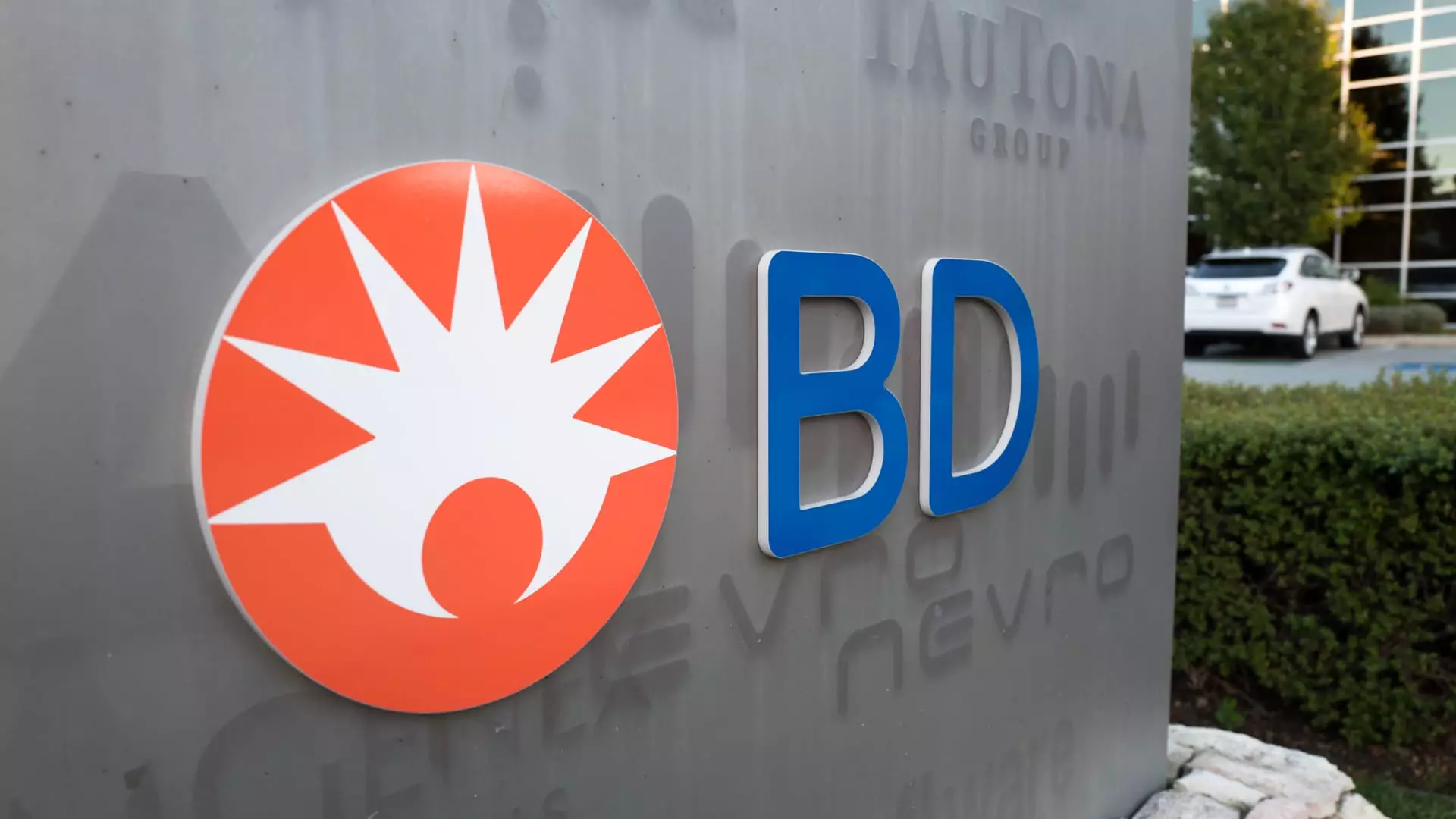Becton Dickinson (BDX) stands at the forefront of medical technology, leading in developing and supplying essential medical devices and diagnostic products to healthcare institutions globally. With a market capitalization of around $66.65 billion, the company has witnessed fluctuating share values, closing recently at $229.85 per share. However, amidst its impressive growth trajectory, BDX faces significant scrutiny from investors and the mounting pressures from activist shareholders.
Becton Dickinson operates primarily through two divisions: MedTech and Life Sciences. The MedTech segment encompasses a range of products, including medication delivery systems and interventional tools, while Life Sciences focuses on diagnostic solutions, including test instruments and specimen transport. Historically, these two segments, although comparable in scale, are currently diverging in terms of growth potential and revenue contributions. As of late, MedTech has been outperforming Life Sciences, generating $15.1 billion in revenue and $6.7 billion in EBITDA, against Life Sciences’ $5.2 billion in revenue and $2 billion in EBITDA.
This disparity in performance highlights an underlying problem: BDX’s two distinct segments are at different growth phases, resulting in varied valuations. MedTech enjoys a mid-single-digit growth rate, whereas Life Sciences is trapped in low-single-digit territory. The company’s combined valuation suffers as it trades at approximately 16.8 times EBITDA, primarily reflecting the valuation of its slower-growth Life Sciences segment.
Enter Starboard Value, a renowned activist investment firm. With a successful history of enhancing operational efficiency and profitability in various companies, Starboard’s involvement with BDX could herald a pivotal change. The firm’s recent campaign focuses on urging BDX to separate its Life Sciences division, a recommendation born from a clear-eyed analysis that recognizes the mismatched growth rates and investment profiles of the two segments.
Starboard’s argument rests on compelling data from its previous activism, with a history of achieving average returns that outstrip industry benchmarks. Their experience in healthcare, particularly with 24 healthcare companies, showcases an average return of 17.65%—significantly higher than the Russell 2000’s 9.57% during comparable periods. Such performance data offers a persuasive foundation for their strategy regarding BDX.
Separating the Life Sciences segment potentially unlocks significant shareholder value, allowing for both businesses to operate more effectively and focus deeply on their growth avenues. Starboard suggests that a spin-off could enable MedTech’s valuation to soar to 13-14 times EBITDA while Life Sciences could command a premium valuation exceeding 20 times EBITDA thanks to its perceived stability and lower susceptibility to market pressures.
The resulting financial recalibration could yield a combined company valuation exceeding $110 billion, an attractive projection for investors eager for tangible growth. Beyond immediate financial benefits, the separation would empower dedicated management teams within each segment to tailor strategies and allocate resources more efficiently, fostering better-focused innovation and potentially maximizing margins.
As discussions surrounding the potential spin-off gather momentum, it is important to recognize BDX’s existing awareness of these dynamics. While Starboard has effectively catalyzed the conversation around this strategic option, BDX has signaled it is at least exploring the separation of its Life Sciences division—whether this is a direct response to Starboard’s recommendations or a concept already considered internally remains ambiguous.
If executed effectively, the spin-off could also expand the universe of investors attracted to pure-play medical technology companies, attracting a wider base of institutional and retail investors knowledgeable in each sector’s nuances. Enhancing the market’s perception of value within both divisions independent of one another could stimulate additional investor interest.
Becton Dickinson’s journey highlights the challenges and opportunities presented by differing growth trajectories within large corporations. As activist investors like Starboard Value push for strategic realignment, BDX stands at a crossroads, capable of adapting and enhancing its competitive edge through thoughtful segmentation. Future developments will not only shape the company’s operational philosophy but could also redefine its market standing in an ever-evolving healthcare landscape.

